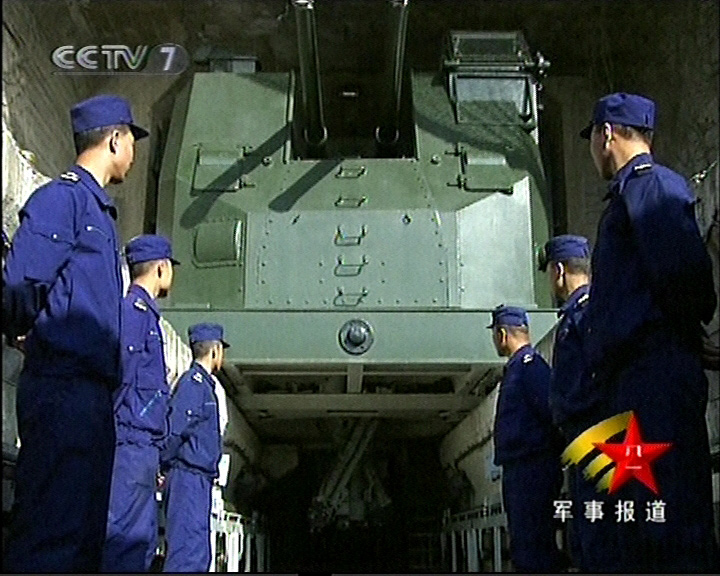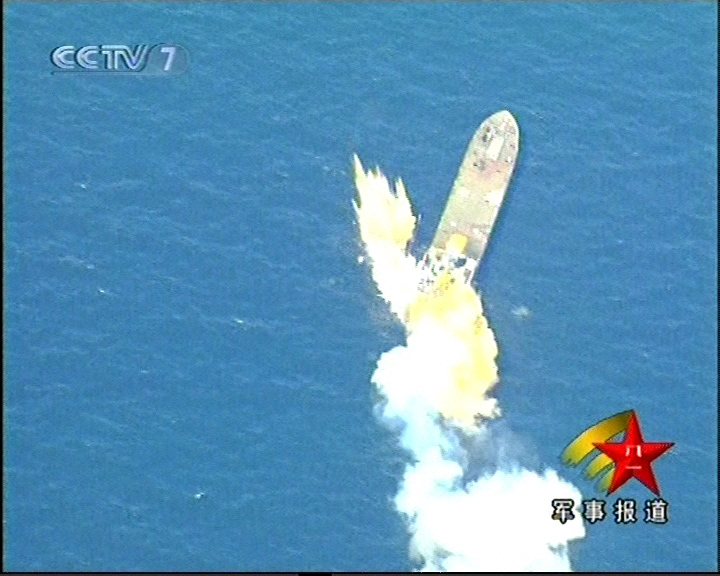All this must assume 1) missiles won't penetrate BB armor (you can't really preempt a mobile land launcher), 2) small craft and sub threat to BB are eliminated using support ships, and 3) the support ships are themselves protected from coastal missiles/guns. Considering this chain of requirements, not to mention the need for air superiority, I can only see the BB adding a bit of firepower afer the beach has already been won.
It is highly unlikely that any of the misiles the PLA coast defense forces have would penetrate the armor of an Iowa-class battleship, and if they did, the extent of damage to the vitals would be minimal due to the design of the armor protection, which coincidentally, is much better configured to deal with missiles than older armor configurations, although this is not the rationale behind the design. The main risk is to exposed sensors, communications eqipment, and weapons directors, which can significantly affect the ship's ability to carry out its mission, although blast hardening of electronics (not done on any other warships) and a combination of systems redundancy and dispersion would minimize the extent of the damage.
This, of course, assumes that the ship and its escorts were incapable of defending against a missile attack, which is highly unlikely. Escorts would include at least one AEGIS-equipped warship, and typically consists of one CG and a mix of 3 DDs, DDGs, or FFGs. It is also likely that in the event of a reactivation, the ships would be modernized in accordance with an updated version of the modernization plans that were sheduled for the ships before the budget cuts of the 1990s forced them to be decommissioned. It included the installation of considerable AAW weaponry. The ships also currently possess CIWS systems and Stingers, as well as chaff launchers (which successfully diverted a C-802 durng Desert Storm), chaff-loaded projectiles, AA projectiles, and electronic warfare systems. I would say that should a battery fire prior to detection and destruction, it is unlikely to cause significant damage. There would also be carrier escort as well, and there would therefore be a CAP which could shoot down missiles as well.
Small craft and sub threat would likely be minimalized for such an operation to take place, and there would be a judicious use of escorts and aircraft to defend against such threats, as well as submarines. There is a risk, but not an unacceptable one. There would be a considerable amount of platforms in the area equipped for ASW and surface warfare, as they would be needed to protect the large amount of shipping which would be built up for the invasion, such as amphibious vessels, auxiliaries, and capital ships. Such an operation would only be likely to be undertaken if the PLAN was weakened considerably and would be limited in its response.
The escorts, of course, would be able to defend against missile attack, as I have already mentioned. It is likely that by this point, the extended-range 16" projectiles would have already been placed into service, seeing as how the earlier design was near that stage when the program was cancelled due to the deactivations. If these or any of the longer-ranged ER projectiles were out of range (unlikely), Tomahawks or SLAM Harpoons could be used to attack the missile batteries until they were within gun range. Once within gun range, targets could be engaged from a distance. As the longer range systems are destroyed, the ships could move in, but still remain beyond the range of shore batteries, which cannot mach the range of 16" guns. Towards the end of the bombardment, it is likely that the group would move further in, which would allow for the destruction of the heavier bunkers and allow medium-caliber batteries on the battleship, its escorts, and other warships assigned to the task to engage the targets ashore and provide closer support to landing forces with the smaller guns should it be needed.
If the PLAAF and PLAN have lost effective control of the skies and of the sea, I don't see how the coast defense forces of the PLA could deal with such an assault, which would likely also be augmented by aircraft once AA batteries are dealt with. They can be pulverized from beyond their maximum gun range. The missiles also would not be too difficult to deal with. I think that the PLA would likely resort to the use of ballistic missiles against the invasion fleet before they got within range. However, if that were not to sufficiently succeed, I don't think that the PLA could do much to prevent the initial landings and a beachhead from being established. It would all likley depend upon actions further inland, beyond the effective range of heavy naval surface fire support.




